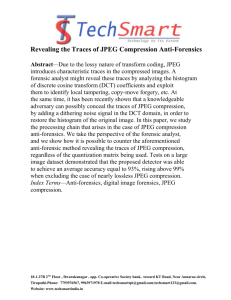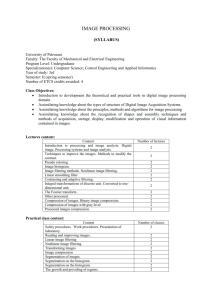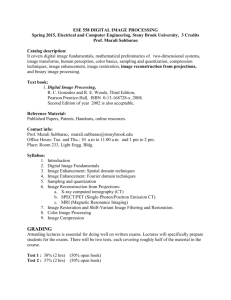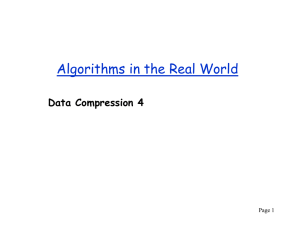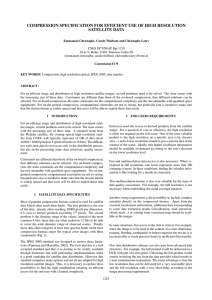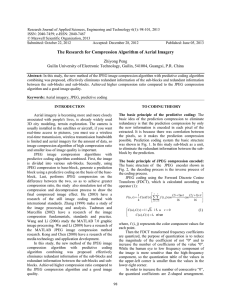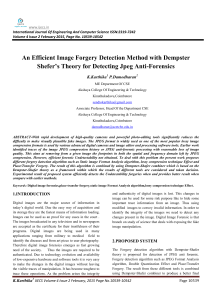Sample - Image and Video Systems lab
advertisement
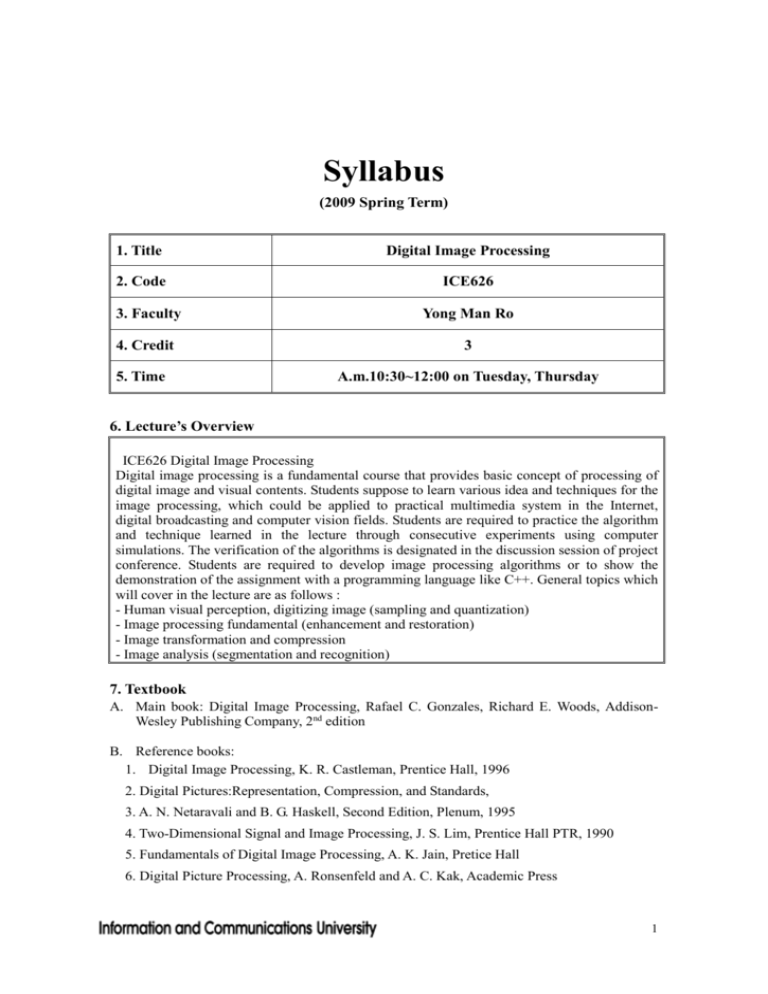
Syllabus (2009 Spring Term) 1. Title Digital Image Processing 2. Code ICE626 3. Faculty Yong Man Ro 4. Credit 3 5. Time A.m.10:30~12:00 on Tuesday, Thursday 6. Lecture’s Overview ICE626 Digital Image Processing Digital image processing is a fundamental course that provides basic concept of processing of digital image and visual contents. Students suppose to learn various idea and techniques for the image processing, which could be applied to practical multimedia system in the Internet, digital broadcasting and computer vision fields. Students are required to practice the algorithm and technique learned in the lecture through consecutive experiments using computer simulations. The verification of the algorithms is designated in the discussion session of project conference. Students are required to develop image processing algorithms or to show the demonstration of the assignment with a programming language like C++. General topics which will cover in the lecture are as follows : - Human visual perception, digitizing image (sampling and quantization) - Image processing fundamental (enhancement and restoration) - Image transformation and compression - Image analysis (segmentation and recognition) 7. Textbook A. Main book: Digital Image Processing, Rafael C. Gonzales, Richard E. Woods, AddisonWesley Publishing Company, 2nd edition B. Reference books: 1. Digital Image Processing, K. R. Castleman, Prentice Hall, 1996 2. Digital Pictures:Representation, Compression, and Standards, 3. A. N. Netaravali and B. G. Haskell, Second Edition, Plenum, 1995 4. Two-Dimensional Signal and Image Processing, J. S. Lim, Prentice Hall PTR, 1990 5. Fundamentals of Digital Image Processing, A. K. Jain, Pretice Hall 6. Digital Picture Processing, A. Ronsenfeld and A. C. Kak, Academic Press 1 8. Exam & Evaluation (refer to rules for teaching) Division Credit MidTerm Quiz 17 % 3% FinalTerm Assignments Programming project Homework 35 % 40% Attendance Total 5% 100% 10. Lecture schedule Duration Contents Note 1. Introduction, class logistics, elements of digital image processing system 2. Human visual perception 3. Sampling & quantization 1~4 week -Homework #1: sampling and quantization 5. Image transforms; Fourier transform -Homework #2: FFT and other transform programming 6. Fast Fourier transform -One or two Quiz 4. Relationships between pixels 7. Other separable image transforms 8. K-L transform 9. Image enhancement; point processing 10. Spatial filtering 11. Enhancement of frequency domain -Homework #3: implementation of image enhancement techniques 5~8 12. Color image processing week 13. Image restoration; degradation model -Homework #4: implementation of image restoration techniques 14. Algebraic Approach -Mid-term exam. 15. Inverse filtering -One or Two Quiz 16. Wiener filter 9~12 17. Image compression; image redundancy week 18. Image compression model -Home work #5: data redundancy -Home work #6: lossless 2 19. Information theory and lossy coding 20. Error-free compression -One Quiz 21. Lossy compression 22. Compression standard 23. Applications: JPEG still-image coding; overview 24. Continue JPEG; parameter definition 25. Continue JPEG; DCT, mode -Home work #7: JPEG compression 13~15 26. Image Analysis: Image featuring week 27. Segmentation I 28. Segmentation II -Home work #8: image segmentation - Final exam Note: The above schedule could be changed 3




